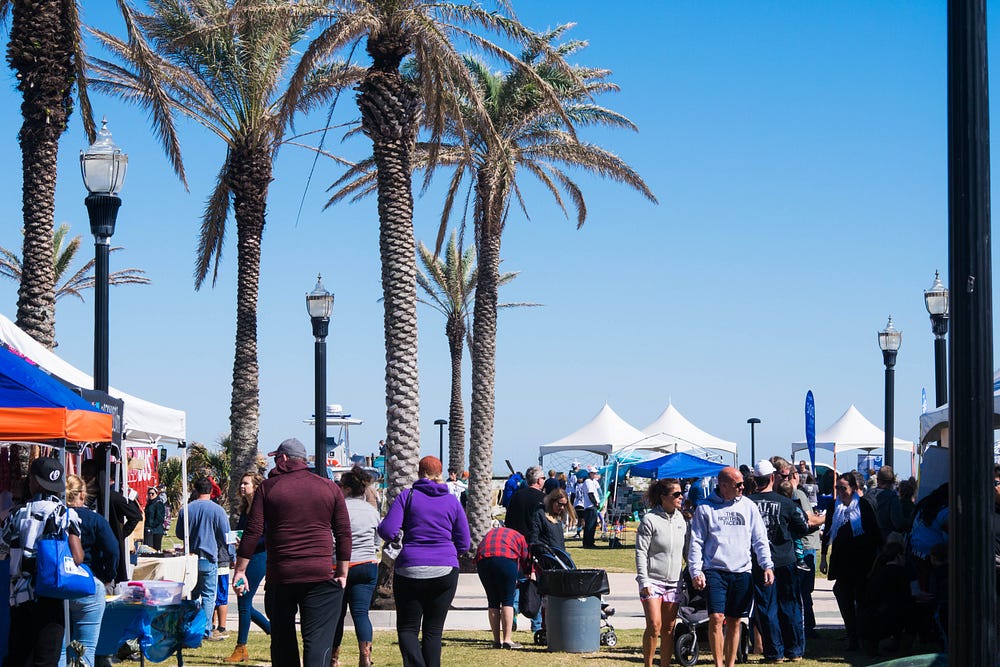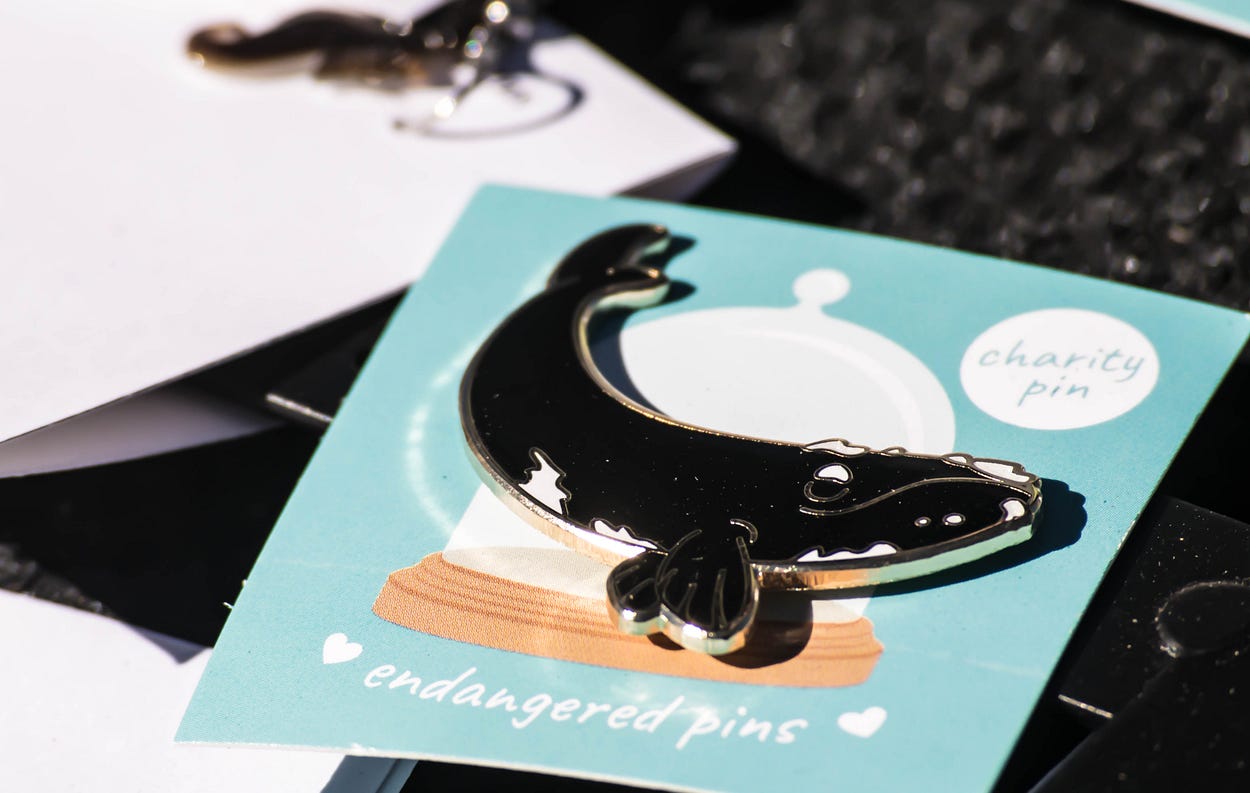
By Courtney Cox | gargoyle@flagler.edu
Right whales were a valuable resource in the 19th century for yielding vast amounts of blubber and baleen. They got their name from being so rich in resources, swimming slowly and closely to shore, their docile nature and floating upon their deaths, thus being the “right” whale to hunt.
However, a lot has changed since then. Instead of people’s reliance on them, they now rely upon people to save what’s left of their species. Some people are contributing to the cause by raising awareness for the sake of the right whale population through their participation in the Right Whale Festival.
On Oct. 29, Jacksonville Beach Seawalk Pavilion brought back the annual Right Whale Festival in its ninth consecutive year to kick start the return of the right whales migration along Florida’s east coast.
This year’s festival theme was “Extinction is Scary,” as Halloween was only a couple days away. The family friendly event was free to all, running from 10 a.m. to 4 p.m.
The Right Whale Festival is run on sponsorships, said first-year event director, Ashlee Lockard. Some of the sponsorships included NOAA, Sea to Shore Alliance, Clearwater Marine Aquarium, Jacksonville Zoo and Gardens and more.
Lockard said that her goal was to get more people involved in the festival–not just Jacksonville Beach locals, but surrounding areas like St. Augustine, Palm Coast, Nocatee and others, as well.
“We want everybody to be involved,” Lockard said. “It has a lot to do with the migration down the East Coast which affects all of us.”

Ocean-specific art vendors, food trucks, a Florida Fish and Wildlife Conservation vessel and right whale specialists could be seen at the festival. Many were under tents trying to keep their products from blowing away.
The festival has brought in roughly 5,000 people in years past, weather permitting, but this year may have fallen short due to an unexpected cold front that raised heavy winds gusting up to 40 mph.
The location of this festival right on the beach brought the wind, but its location is specific to the right whales because they can be seen from that spot and have been spotted in their migration passage in past festivals, Lockard said.
With fewer than 500 remaining, the North Atlantic right whale is one of the world’s most endangered large whale species, said Cheryl Munday.

Munday, NOAA Fisheries marine mammal outreach specialist, said that the Right Whale Festival celebrates the right whale’s return to northeast Florida.
“Endangered North Atlantic right whales migrate south, more than 1,000 miles away from their feeding grounds off Canada and New England to the warm coastal waters of South Carolina, Georgia and northeast Florida,” Munday said. “These southern waters are the only known calving area for the species, an area where they give birth to and nurse their young; calving season begins in mid-November and runs through mid-April.”
The whales not only give birth off the southeastern coast of the U.S., but it’s also where the calves form a crucial bond with their mothers before traveling to northern feeding grounds, Munday said.
However, with two of their largest threats being vessel strikes and entanglements in fishing gear, it makes migrating more of a challenge. There are things that people can do to help the right whales though, Munday said:
- Let others know about the challenges of right whales.
- Tell others about the importance of the coastal water of the east coast of the United States to right whales and why vessel operators need to use caution.
- Keep a look out on boats?—?right whales are hard to see but can be identified by their v-shaped blow.
- If you see a whale, slow down.
- Be sure to always stay 500 yards away from a right whale.
- Report right whale sightings, as well as dead, injured or entangled right whales to 1–877 WHALE HELP (1–877–942–5343).
North Atlantic right whales need protection and the Right Whale Festival’s goal is to raise awareness of that, Lockard said. They serve a purpose.
“Whales play a crucial role in the ecosystem because they help regulate the flow of food in the ocean,” Munday said. “Right whales eat about 2,600 pounds of zooplankton (copepods) per day; so the consequences of removing this important tier of the food chain would disrupt balance and the abundance of other species in the food chain.”
The hopes are high that awareness, like the Right Whale Festival, will create more movement.
“In 2015, researchers estimated there were 458 individuals reflecting a population decline from 2010 to 2015. It takes scientists a year or two to determine the population from a given year using sighting data (photos collected from aerial surveys), as well as known births and deaths,” Munday said. “ This summer, at least 15 right whales died in Canadian and U.S. waters. We hope this year will be a successful calving season.”


Be the first to comment on "The not-all right whales need the right change"